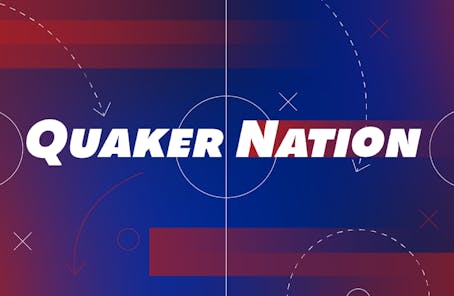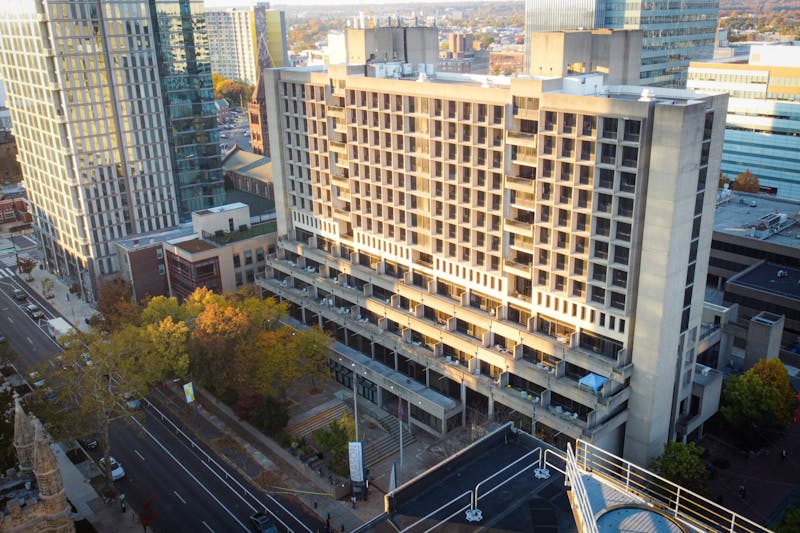Hola. Bonjour. Guten Tag. Nazdar. Shalom. Hujambo.
There are many ways Penn students can learn to say hello to one another. In fact, there are actually 60 different types of language classes offered that teach ways to greet fellow students.
Beginning in 1989 with the development of the Penn Language Center, the University initiated a project of "expanding and intensifying [Penn's] language curriculum," according to the PLC Web site.
Fifteen years since the center's founding, Penn offers students a wide range of language course choices, including the more traditional Romance languages of Spanish, French, German and Italian, as well as less common African, Middle Eastern and South Asian languages.
There is not one simple reason for the development of this expansive language program. However, PLC Director Nelleke Van Deusen-Scholl, a native Dutch speaker, tried to explain.
"The most important reason to study another language is that it gives you another perspective on the world. Expanding your mind with another language is" an incomparable experience, she says.
She adds that learning another language does not just mean learning about different cultures, eating habits or festivals, but rather embracing the language and its culture as a whole and connecting it to one's current surroundings.
If students are interested in a language not already offered on campus, the PLC will arrange for a class to be taught. But before offering students courses in that specific language, there must be a minimum of six students interested in the course. The PLC must also identify a curricular need for the course.
What makes Penn unique in its language department is that, unlike most colleges and universities, all of Penn's language courses satisfy the language requirement.
Last year, according to Van Deusen-Scholl, a group of students interested in studying Ukrainian to satisfy their requirement proposed a Ukrainian course to the PLC. Now, with the help of these eager students, Ukrainian has been added to the long list of languages taught at Penn.
In order for the University to offer such an array of languages, two important components are needed -- enthusiastic students and well-qualified instructors.
According to Van Deusen-Scholl, "Ideally, professors must have a Ph.D. in their language of expertise, with a master's degree minimally. [It's] helpful for the teachers to be native speakers, [although] this is not required."
Finding language professors would conceivably be a daunting task for the PLC if it did not enlist the help of language coordinators.
Vijay Gambhir is the language coordinator for South Asian languages, which include 10 regularly offered courses. The most popular choices within the South Asian Studies Department include Tamil, Bengali, Gujarati and Hindi, which gets the maximum enrollments.
Gambhir's job has proven to be quite intense, as finding qualified teachers is often limited to "candidates in the Philadelphia area."
Still, "South Asian Studies has been most lucky in recruiting Penn students who are doing masters and Ph.D.s in language-related disciplines," Gambhir says.
Beyond finding teachers, locating textbooks is another challenge for language coordinators, especially in South Asian Studies.
"Most of our languages do not have textbooks based on [the] latest methodologies. Teachers have to supplement materials to adapt their traditional textbooks," Gambhir says.
The African Studies Center's African Language Program has also been a growing component of Penn's language curriculum. Currently Penn offers 10 different African languages, including Chichewa and Kinyarwanda, which were added this semester.
Audrey Mbeje is the language coordinator for African Studies. Aside from overseeing the training of the department, she also teaches Swahili.
"Swahili is the most popular language [in the department], because most students already know about it. Zulu is also growing," Mbeje says.
She added that many of the "language courses predominantly attract heritage students who either came to the U.S. at an early age or who were born in the U.S. by African immigrants."
Beyond the study of the spoken language, the PLC also stresses the importance of body gestures and facial movements to communication.
American Sign Language is currently the most popular language course on campus, with approximately 300 students enrolled in the multi-level courses.
College junior Jeremy Esterkin is one of these students currently learning ASL.
"Really, I chose it because it seemed at the time like a fun alternative to the language requirement, since I was never really strong in language in high school," Esterkin says.
Yet since his first ASL class, Esterkin has learned to appreciate the art of non-verbal communication.
"Without a doubt, this class is more fun that any others that I've taken at Penn. It took a little while to get used to the format of the class -- it's weird not to speak for an hour and a half -- but it becomes natural after you begin."
So for those Penn students still looking to satisfy their language requirement or even just to expand their linguistic skills, with the help of the PLC the possibilities are endless.
The Daily Pennsylvanian is an independent, student-run newspaper. Please consider making a donation to support the coverage that shapes the University. Your generosity ensures a future of strong journalism at Penn.
DonatePlease note All comments are eligible for publication in The Daily Pennsylvanian.







